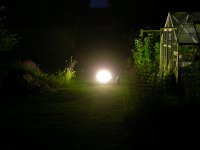Oleander
Registered Moth-er
Here's some pictures of my new trap that I've built. I am really proud of it! o I have no water proof choke so it is screwed to the bottom. I think mine is one of those that usually lampposts have.
I have no water proof choke so it is screwed to the bottom. I think mine is one of those that usually lampposts have.
Would be fun to see other traps and the area where you trap!
Would be fun to see other traps and the area where you trap!




















